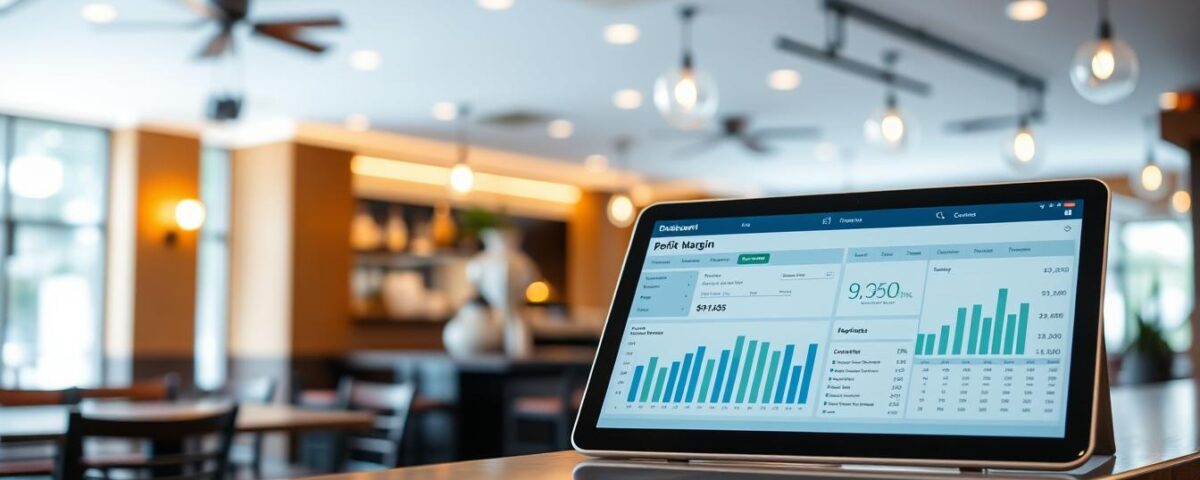
How to Use a Food Cost Template to Boost Margins 15 %
August 22, 2025
Quick Calculator: Find Your Food Cost in Under 5 Minutes
August 23, 2025As a restaurant owner, you’re likely no stranger to the challenges of maintaining a healthy profit margin in a competitive industry. With the National Restaurant Association predicting $1.5 trillion in sales this year, the demand for quality dining experiences is on the rise, but so are the costs. Rising food costs, labor shortages, and changing customer expectations can all impact your bottom line.
Understanding your current profit margin is crucial to improving it. By calculating and interpreting this key financial metric, you can identify areas for improvement and make data-driven decisions to drive growth. So, how can you boost your restaurant’s profit and stay ahead of the competition?
Key Takeaways
- Proven strategies to boost your restaurant’s profit margin above the industry average.
- How to calculate and interpret your current profit margin.
- Actionable tactics to reduce costs and increase revenue.
- Opportunities to optimize operations and improve financial performance.
- A comprehensive approach to achieving sustainable financial growth.
Understanding Restaurant Profit Margins
Mastering profit margins is akin to a chef mastering their knife skills – it’s fundamental to running a successful kitchen and, by extension, a successful restaurant. Profit margins can vary greatly, depending on the type of restaurant you operate, where it’s located, and many other factors.
Defining Profit Margins in Restaurants
A restaurant’s profit margin is a critical metric that indicates the percentage of revenue that remains as profit after accounting for various expenses. In essence, it reveals how efficiently a restaurant is managed. I’ve seen firsthand how profit margins directly determine a restaurant’s ability to survive economic downturns, invest in growth, and provide returns to owners and investors. A healthy profit margin is not just about maximizing profits; it’s about creating a sustainable business model.
The Importance of Profit Margins for Restaurant Success
Profit margins matter significantly for restaurant success as they influence every major business decision, from menu development to expansion opportunities and staffing models. Low margins often indicate underlying problems with food costs, labor management, or pricing strategy. By understanding and managing profit margins effectively, restaurant owners can identify areas of improvement, make informed decisions, and build a more resilient business. I’ve helped restaurants transform their financial performance by shifting focus from pure sales volume to strategic margin management, and the results can be significant.
By prioritizing profit margin improvement, you’ll not only enhance your restaurant’s financial health but also create a competitive edge in the industry. The key is to strike a balance between revenue growth and cost management, ensuring that your restaurant remains profitable and sustainable in the long run.
Calculating Your Restaurant’s Profit Margin
Understanding how to calculate your restaurant’s profit margin is crucial for making informed decisions about your business. Your restaurant’s profit margin is a key performance indicator that reveals the financial health of your operation.
To calculate your restaurant’s profit margin, you need to understand two important formulas: Gross Profit Margin and Net Profit Margin. These formulas will help you assess your business’s profitability and identify areas for improvement.
Gross Profit Margin Formula
The Gross Profit Margin formula is a simple calculation that helps you understand your restaurant’s profitability. It’s calculated by subtracting the Cost of Goods Sold (COGS) from your total revenue, then dividing the result by your total revenue, and finally multiplying by 100 to get a percentage.
- The formula is: (Total Revenue – COGS) ÷ Total Revenue × 100.
- For example, if your restaurant generates $100,000 in revenue with $30,000 in COGS, your Gross Profit Margin would be 70%.

Net Profit Margin Formula
The Net Profit Margin formula takes into account all your restaurant’s expenses, providing a more comprehensive picture of your business’s financial health. It’s calculated by subtracting your total expenses from your total revenue, then dividing the result by your total revenue, and finally multiplying by 100 to get a percentage.
- I define net profit margin as your restaurant’s bottom line – it represents the percentage of each sales dollar that remains as profit after accounting for all expenses.
- The formula I use for calculating net profit margin is: (Total Revenue – Total Expenses) ÷ Total Revenue × 100.
- For instance, if your restaurant generates $500,000 in quarterly revenue with $475,000 in total expenses, your net profit margin would be 5%.
Understanding your net profit margin is essential for making informed decisions about expansion, renovation, menu changes, and other significant business investments. By tracking your net profit margin over time, you can reveal the impact of operational changes, menu updates, and marketing initiatives on your bottom line.
Average Restaurant Profit Margins by Type
Understanding the average profit margins of different types of restaurants is crucial for making informed business decisions. The restaurant industry encompasses a wide range of business models, each with its unique financial characteristics.
Full-Service Restaurants
Full-service restaurants typically achieve profit margins between 3-5%. These establishments face higher labor costs due to the need for servers, bartenders, and hosts. However, they can offset these costs with higher menu prices and beverage sales. To improve profit margins, full-service restaurants should focus on optimizing their menu offerings and streamlining service processes.
- Menu engineering to increase high-margin item sales
- Staff training for efficient service delivery
- Inventory management to reduce waste
Quick Service Restaurants
Quick service restaurants (QSRs) generally have higher profit margins, ranging from 6-8%, due to lower labor costs and streamlined operations. QSRs achieve this through simplified menus and efficient service models. To further enhance profitability, QSRs can implement strategies like value-based pricing and limited-time offers to drive sales volume.
Key strategies for QSRs include:
- Menu simplification
- Self-service kiosks to reduce labor costs
- Promotions to boost sales during off-peak hours
Food Trucks and Other Concepts
Food trucks and other non-traditional restaurant concepts have gained popularity, offering unique dining experiences. Food trucks typically achieve profit margins similar to full-service restaurants, around 3-5%. Their lower overhead costs, particularly for real estate, contribute to their profitability. Emerging concepts like ghost kitchens can achieve higher margins, between 8-12%, by eliminating front-of-house expenses.
By understanding the profit margin benchmarks for different restaurant types, owners can identify the most suitable business model for their financial goals and operational strengths.
Reducing Food Costs to Improve Restaurant Profit Margin
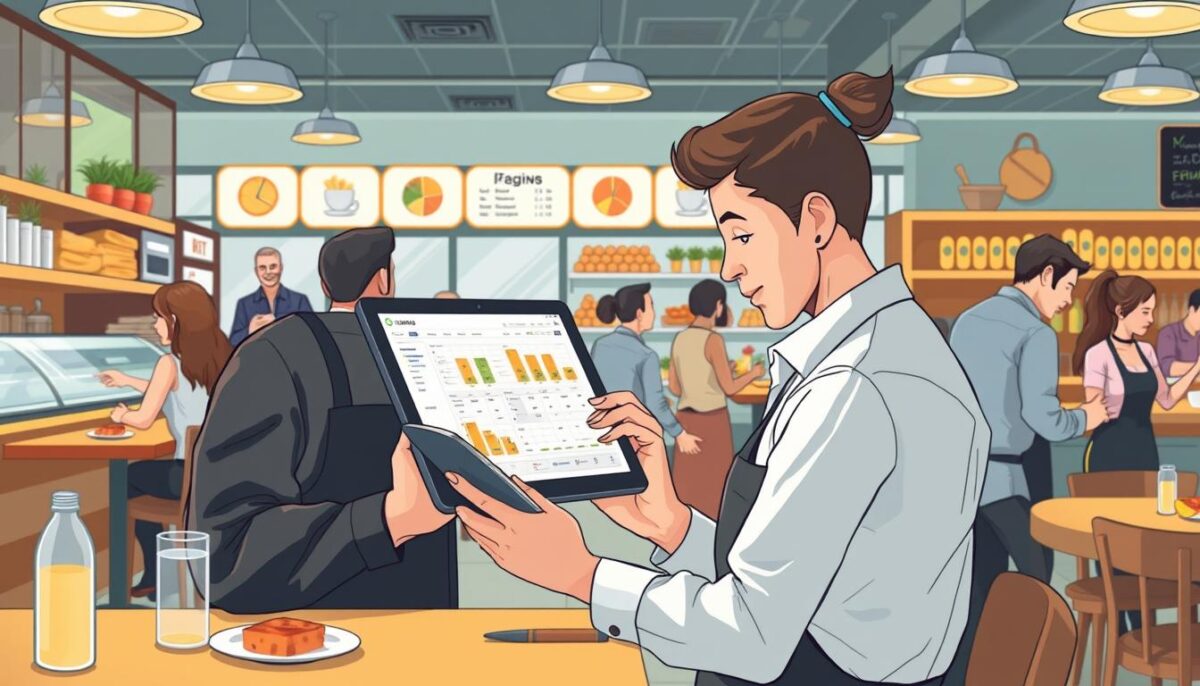
One of the most effective ways to enhance your restaurant’s profit margin is by minimizing food waste and optimizing inventory. By implementing effective inventory management and reducing waste, you can significantly improve your bottom line.
Implementing Effective Inventory Management
Effective inventory management is crucial for reducing food costs. To achieve this, I recommend using restaurant inventory management software. This tool helps track inventory levels, monitor usage, and automate ordering processes. By doing so, you can prevent overstocking, reduce spoilage, and ensure that you’re using the freshest ingredients.
Key benefits of inventory management software include:
- Accurate tracking of inventory levels
- Automated ordering processes
- Reduced waste and spoilage
Minimizing Food Waste Through Better Practices
Minimizing food waste is another critical strategy for improving your restaurant profit margin. I’ve found that conducting regular food waste audits is essential. This involves tracking all discarded food for at least one week, categorizing by type (prep waste, spoilage, customer plate waste) to identify specific problem areas.
- Training your kitchen staff on proper cutting techniques and full ingredient utilization can significantly reduce prep waste.
- Implementing standardized recipes with precise measurements ensures consistency while preventing over-portioning.
- Repurposing trim and excess ingredients creatively converts potential waste into value.
By implementing these strategies, you can typically improve your restaurant profit margin by 1-3 percentage points while also enhancing your sustainability credentials.
Optimizing Labor Costs Without Sacrificing Quality

Restaurants can improve their profit margins by optimizing labor costs while maintaining high service standards. One effective way to achieve this is through strategic staff scheduling and comprehensive training programs.
Strategic Staff Scheduling
Effective staff scheduling is crucial for managing labor costs. By using restaurant staff scheduling software, you can optimize your staff’s work hours to match customer demand, reducing unnecessary labor expenses. This software helps in creating schedules that ensure adequate staffing during peak hours and minimize overstaffing during slow periods.
Additionally, investing in your staff with competitive benefits can improve retention, thereby reducing the costs associated with high turnover. Comprehensive staff training is also one of the most overlooked opportunities for reducing labor costs while simultaneously improving service quality and restaurant profit.
Training for Efficiency and Productivity
Developing standardized training programs for each position ensures all staff members learn efficient work methods from the start. Cross-training employees to handle multiple stations or roles creates scheduling flexibility and reduces the total staff needed per shift. I’ve helped restaurants save 5-8% on labor costs through effective cross-training.
Implementing clear service standards and procedures eliminates wasted motion and time, allowing staff to serve more customers with the same labor hours. By implementing comprehensive training programs focused on efficiency and productivity, you can typically improve your restaurant profit by reducing labor costs 3-5% while enhancing customer satisfaction.
Some key strategies include:
– Developing standardized training programs for each position
– Cross-training employees to handle multiple roles
– Implementing clear service standards and procedures
– Training managers in labor forecasting and real-time adjustment techniques
– Investing in retention-focused training and development
– Implementing performance metrics and incentives tied to efficiency
By focusing on these areas, restaurants can significantly reduce labor costs without sacrificing the quality of service, ultimately improving their bottom line.
Menu Engineering for Higher Profits
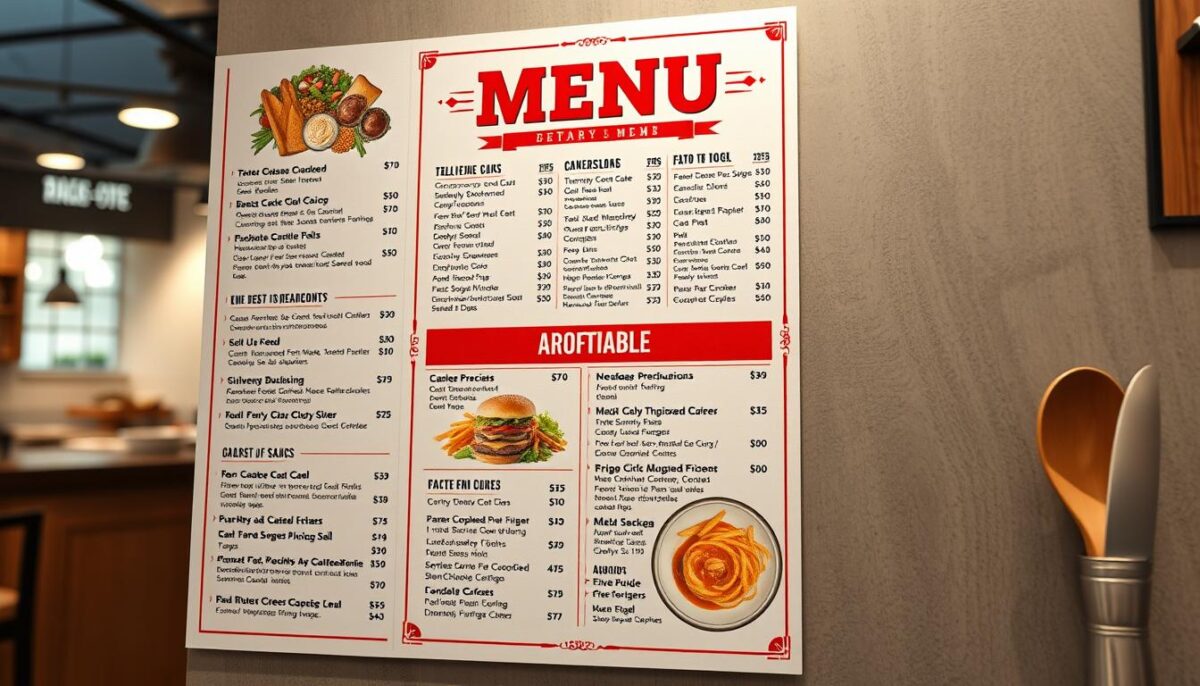
Menu engineering is a powerful tool that can help restaurants increase their profit margins and stay competitive. By analyzing and optimizing your menu, you can identify opportunities to improve profitability without sacrificing customer satisfaction.
Strategic Menu Design and Layout
A well-designed menu is crucial for driving sales and profitability. By strategically placing high-profit items and using visual cues, you can draw customers’ attention to these items and increase their sales.
Some effective strategies include:
- Using boxes or icons to highlight signature or high-profit dishes
- Placing high-profit items in prominent positions, such as the top right or center of the menu
- Creating a visual hierarchy to guide customers through the menu
Pricing Strategies That Protect Margins
Pricing strategies are the seasoning that can enhance the flavors of profitability. By adjusting portion sizes, ingredients, or even the price of popular but low-profit items, you can subtly improve margins without alienating your clientele.
- Implementing value-based pricing that considers your costs, positioning, competition, and what customers are willing to pay
- Using psychological pricing techniques like charm pricing and price anchoring
- Analyzing price elasticity for different menu categories and adjusting prices accordingly
- Implementing strategic price increases of 2-3% every 6-12 months
- Using bundle pricing and tiered pricing strategies to increase perceived value and improve margins
By implementing these strategies, you can improve your restaurant’s overall profitability by 2-5 percentage points without negatively impacting customer perception.
Boosting Sales Volume and Revenue
A proven way to improve your restaurant’s financial performance is by focusing on strategies that boost sales volume and revenue. As a restaurant owner, you have multiple avenues to explore in order to achieve this goal.
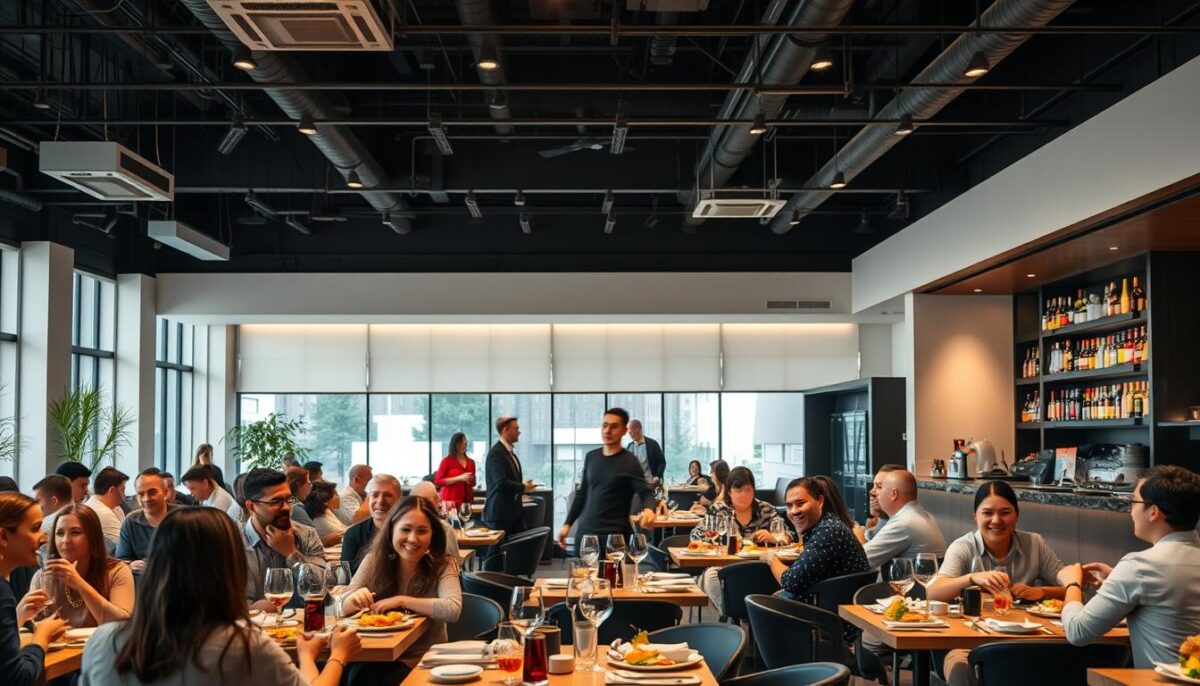
Effective Upselling and Cross-selling Techniques
One of the most effective ways to increase sales is through upselling and cross-selling. By training your staff to suggest higher-margin items or complementary dishes, you can significantly enhance the average check size. For instance, if a customer orders a burger, suggesting a premium topping or a side of fries can increase the sale. Effective upselling can lead to a substantial increase in revenue without a proportional rise in costs.
- Train staff to recognize opportunities for upselling.
- Implement a menu engineering strategy to highlight high-margin items.
- Use descriptive language to make high-margin items more appealing.
Implementing Loyalty Programs
Loyalty programs are another powerful tool for boosting sales volume and revenue. Surprisingly, many sit-down and fine dining restaurants underutilize this strategy. Given that 90% of fine dining guests say they’d sign up for a next-gen loyalty program, there’s a significant opportunity to increase customer loyalty and retention. Well-designed loyalty programs can increase customer visit frequency by 35-45% and average spend by 15-25%.
- Create tiered rewards to encourage higher spending and visit frequency.
- Integrate digital loyalty programs with your POS system to gather valuable customer data.
- Design your loyalty program to reward behaviors that drive profitability, such as higher check averages or visits during slower periods.
By implementing these strategies, you can not only boost your sales volume and revenue but also enhance your restaurant’s overall profitability and competitiveness in the market.
Leveraging Technology to Increase Efficiency
In today’s competitive restaurant industry, leveraging technology is crucial for increasing efficiency and boosting profit margins. By adopting the right technology solutions, you can streamline your operations, reduce costs, and enhance customer satisfaction.
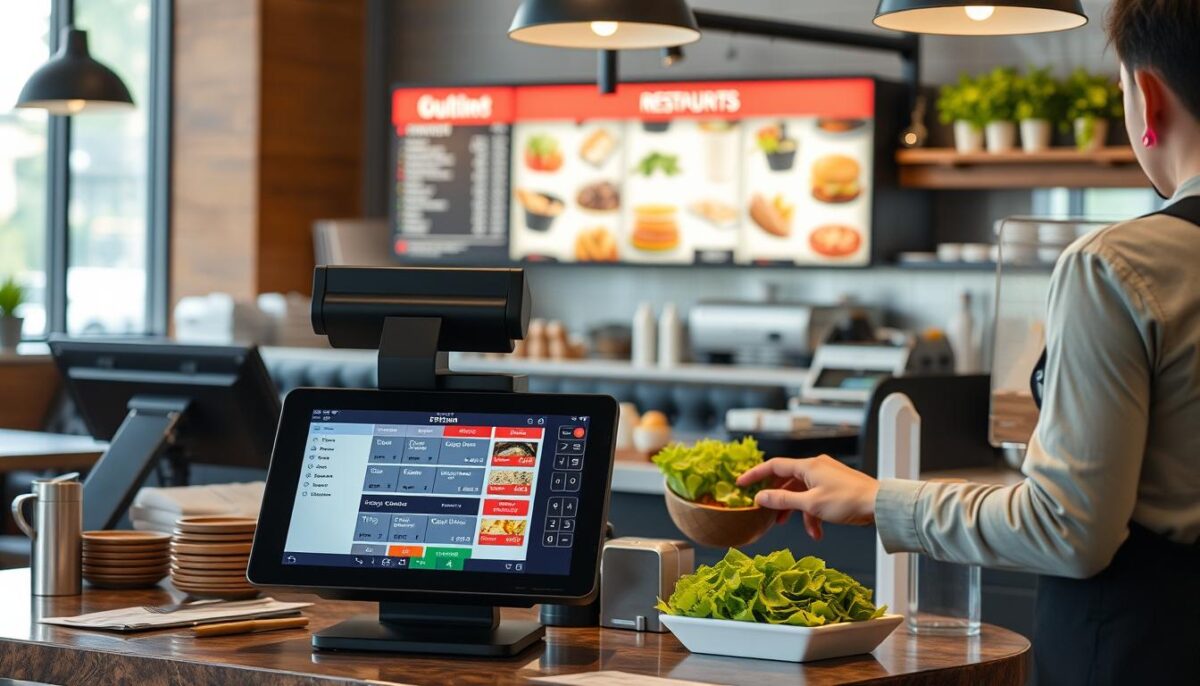
POS Systems and Automation
Implementing a modern POS system with automation features can significantly improve your restaurant’s efficiency. Automation helps reduce manual errors, speeds up service, and allows staff to focus on customer satisfaction. By integrating your POS system with other tools, such as inventory management and customer loyalty programs, you can gain valuable insights into your operations and make data-driven decisions.
Some key benefits of POS systems and automation include:
– Streamlined order processing and reduced labor costs
– Enhanced customer experience through faster service
– Valuable insights into sales trends and customer behavior
Online Ordering and Delivery Integration
Providing online ordering and delivery services can significantly boost your sales volume. By partnering with delivery platforms and implementing an efficient online ordering system, you can cater to the needs of busy professionals and families, maintaining customer loyalty and driving incremental revenue.
- I’ve found that restaurants with integrated online ordering systems typically see 20-30% higher average check sizes compared to phone orders, significantly improving profit margins.
- Implementing direct online ordering through your own website or app can save 15-30% in commission fees while building direct customer relationships.
- The data collected through online ordering systems provides valuable insights into customer preferences and ordering patterns that can inform menu development and marketing strategies.
By strategically implementing and optimizing online ordering and delivery integration, you can increase total revenue by 15-25% while maintaining or even improving profit margins on these sales.
Marketing Strategies That Drive Profitability
Restaurant owners can significantly enhance their profit margins by leveraging targeted marketing strategies that attract high-value guests.
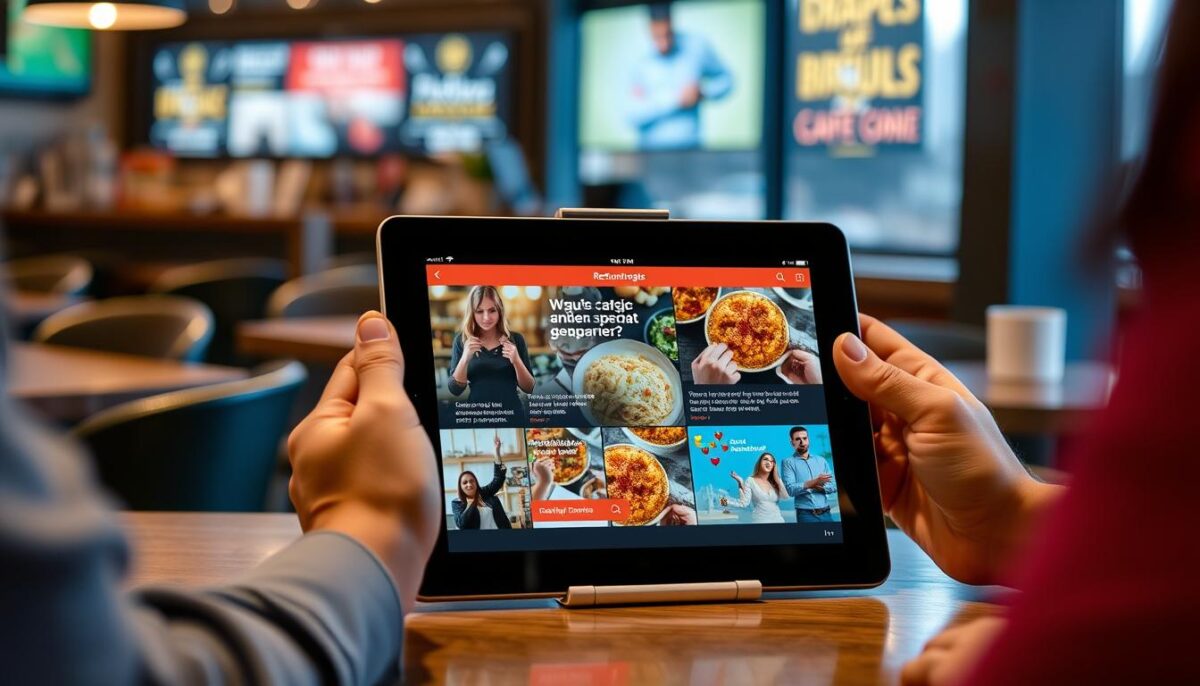
Digital Marketing for Restaurants
Digital marketing is crucial for restaurants to increase their online presence and attract more customers. By utilizing social media platforms, email marketing, and search engine optimization (SEO), restaurants can effectively reach their target audience and drive sales.
For instance, leveraging social media platforms like Instagram and Facebook can help restaurants showcase their dishes, share customer experiences, and promote special offers. Email marketing allows businesses to keep their customers informed about new menu items, events, and promotions, ultimately driving revenue.
Promotions That Increase Profit, Not Just Sales
Creating promotions that are focused on increasing profit margins rather than just driving sales volume is a strategic approach to marketing. This involves analyzing your sales mix and margins to identify areas with strong profit potential and minimizing unnecessary costs.
- Implementing limited-time offers (LTOs) featuring high-margin seasonal ingredients.
- Structuring happy hour promotions to drive traffic during slow periods while maintaining healthy margins by focusing on high-profit items.
- Offering prix fixe menus for special occasions to control food costs and streamline kitchen operations, creating perceived value for guests.
By implementing these business strategies, restaurants can improve their overall profit margin by 1-3 percentage points while driving customer engagement and loyalty, ultimately increasing revenue.
Reducing Overhead Expenses
One effective way to increase your restaurant’s bottom line is by reducing unnecessary overhead expenses. As a restaurant owner, managing overhead costs is crucial for maintaining a healthy profit margin. In this section, we’ll explore two key areas where you can make significant savings: energy efficiency and utility management, and negotiating better terms with suppliers and landlords.
Energy Efficiency and Utility Management
Implementing energy-efficient practices not only reduces your utility bills but also contributes to a more sustainable business model. Simple changes like switching to LED lighting, optimizing HVAC systems, and using energy-efficient appliances can make a substantial difference. I recommend conducting an energy audit to identify areas where you can cut back on unnecessary energy consumption. By doing so, you can potentially save thousands of dollars annually, directly impacting your restaurant’s profit margin.
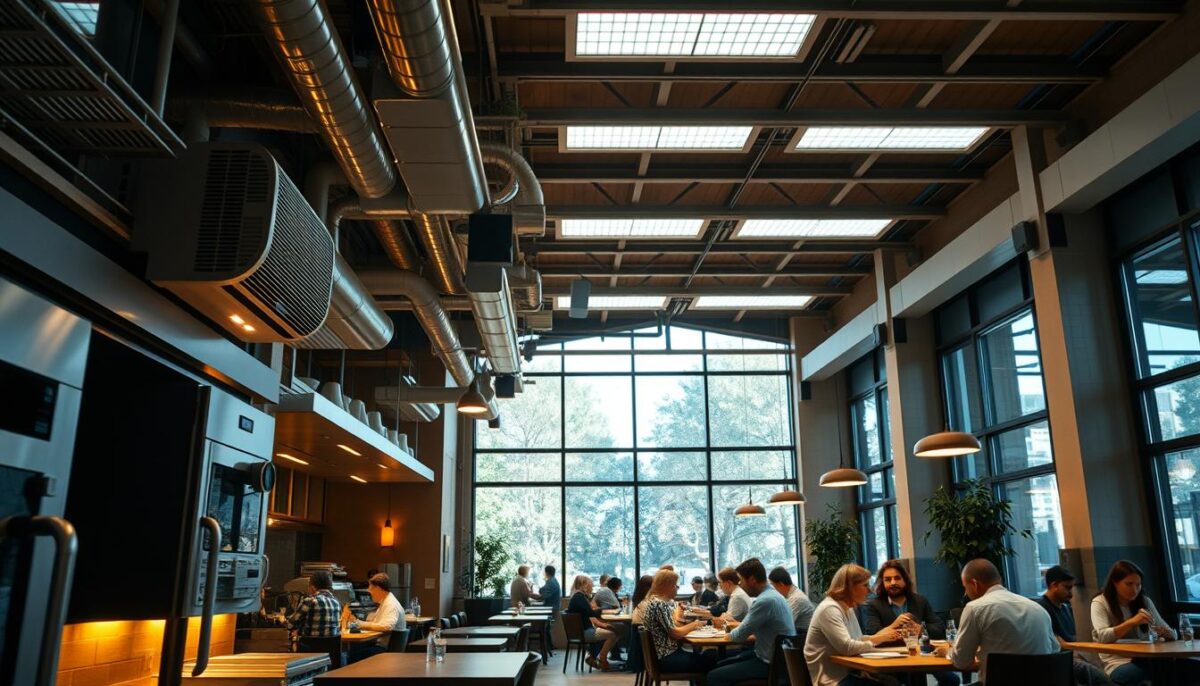
Negotiating Better Terms with Suppliers and Landlords
Proactive negotiation with suppliers and landlords can significantly reduce your fixed costs. I’ve found that thorough market research is the foundation of successful supplier negotiation. Regularly comparing prices across multiple vendors ensures you’re receiving competitive rates. Consolidating purchases with fewer suppliers can increase your buying power, qualifying you for volume discounts. When negotiating with landlords, gathering market data on comparable properties strengthens your position. Consider negotiating percentage rent structures that align your occupancy costs with your revenue. By systematically negotiating better terms, you can typically reduce your restaurant’s overhead expenses by 2-4% of total revenue.
To achieve these savings, I advise restaurants to negotiate payment terms that align with their cash flow and implement annual contracts with price protection clauses. Additionally, exploring cooperative purchasing with neighboring businesses can unlock better pricing. By focusing on these strategies, you can create a more cost-effective operation that enhances your restaurant’s profitability.
Conclusion: Creating a Sustainable Path to Above-Average Profits
Sustainable success in the restaurant industry hinges on the ability to balance revenue growth with cost control, ultimately leading to improved profit margins. As we’ve explored throughout this guide, enhancing your restaurant’s profit margin involves a range of strategies that impact both the top and bottom lines.
To achieve above-average profits, restaurants must implement a combination of strategies that enhance revenue and reduce expenses. Understanding your current financial position through accurate calculation of both gross and net profit margins provides the foundation for all improvement efforts.
Prioritizing your profit improvement initiatives based on potential impact and implementation difficulty is crucial. Focus on “quick wins” that can generate immediate results while building momentum for more complex changes. Creating a balanced approach that addresses both revenue enhancement and cost reduction ensures you’re not sacrificing long-term growth potential for short-term margin improvements.
Involving your entire team in profit improvement efforts creates organizational alignment and generates valuable insights from those closest to your daily operations. Restaurants achieving consistently above-average profit margins typically excel at data-driven decision making, using their POS and inventory systems to identify specific opportunities for improvement.
By systematically implementing the strategies outlined in this guide, you can transform your restaurant’s financial performance, creating a sustainable business that rewards your hard work with above-average profits for years to come. Regular financial review processes and benchmarking your performance against industry standards will help maintain your competitive edge.
I encourage you to view profit margin improvement as an ongoing journey rather than a destination. The most successful restaurants continuously refine their approaches to stay ahead of industry averages, ensuring long-term success in the competitive restaurant industry.
FAQ
What is a good profit margin for my business?
A good profit margin varies by industry, but for full-service establishments, it’s typically between 3-5%, while quick-service concepts can range from 6-9%. I recommend analyzing your specific business model and comparing it to industry averages.
How can I reduce my food costs?
To reduce food costs, I suggest implementing effective inventory management, minimizing food waste, and negotiating better terms with suppliers. By doing so, you can lower your cost of goods sold and improve your overall gross profit.
What are some effective ways to optimize labor costs?
To optimize labor costs, I recommend using strategic staff scheduling and providing training for efficiency and productivity. By doing so, you can reduce unnecessary labor expenses while maintaining high-quality service.
How can I use menu engineering to increase my revenue?
Menu engineering involves using strategic menu design and pricing strategies to maximize revenue. By highlighting high-margin items and using upselling and cross-selling techniques, you can increase average ticket sizes and drive sales volume.
What role does technology play in improving my business’s efficiency?
Technology, such as POS systems and online ordering and delivery integration, can significantly improve efficiency by automating tasks, reducing errors, and streamlining operations. By leveraging these tools, you can free up staff to focus on high-value tasks and improve overall productivity.
How can I use marketing strategies to drive profitability?
Effective marketing strategies, such as digital marketing and targeted promotions, can drive profitability by attracting high-value customers and increasing average ticket sizes. By focusing on loyalty programs and retention, you can also reduce customer acquisition costs and improve overall revenue.
What are some ways to reduce overhead expenses?
To reduce overhead expenses, I suggest implementing energy efficiency measures, negotiating better terms with suppliers and landlords, and streamlining operations to reduce waste. By doing so, you can lower your fixed costs and improve overall net profit.
